#6 April 1893
Text
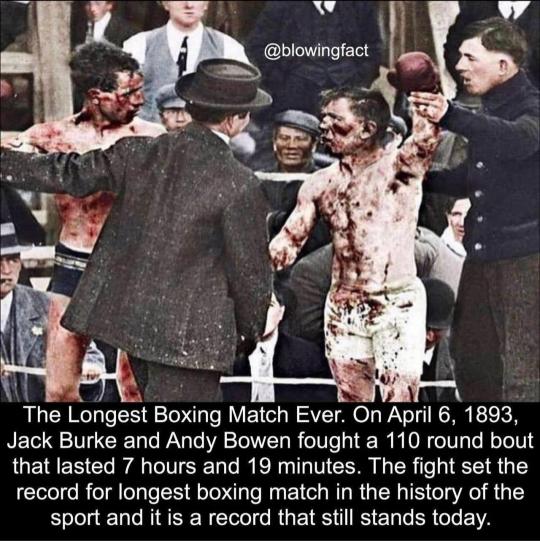
16 notes
·
View notes
Text
Against All Odds {TVA!Loki x Female Reader Longfic}

Cee's Loki Fic Masterlist / AO3 Link
Series Summary : It was supposed to be a one-time thing : Loki was just trying to blow off some steam, and you were just trying to salvage your birthday evening. But time has a funny way of repeating itself, and now you are irrevocably entwined with each other.
Because Loki's going to turn your whole world upside down, and you're going to help him do it.
Pairing : TVA!Loki x Female Reader (Brad's date from the Zaniac movie premiere)
Tags / Content : Alternature Universe - Canon Divergence after S2 E2), Strangers to Lovers, Smut, Time Travel Shenanigans, S2 of Loki compliant-ish, Angst, Fluff, Hurt/Comfort
18+ only - Minors DNI
⊱ ─ ༓ ── ⋅•⋅⊰ ─ ⋅ ∙ ∘ ☽ ༓ ☾ ∘ ∙ ⋅ ─ ⊱⋅•⋅ ── ༓ ─ ⊰
Chapter 1 - Against the Wall {takes place on June 18th, 1977}
Chapter 2 - Against Each Other {takes place on June 25th, 1977}
Chapter 3 - Against Better Judgement {takes place on June 25th, 1977}
Chapter 4 - Hope Against Hope {takes place on June 26th, 1977}
Chapter 5 - Every Now and Again {takes place on June 27th, 1977]
Chapter 6 - Your Word Against Mine {takes place on June 30th 1977}
Chapter 7 - A Race Against Time {takes place on October 5th, 1893 / July 1st, 1977}
Chapter 8 - Two Strikes Against {takes place on December 24th, 1977}
Chapter 9 - Against the Tide {takes place on December 25th, 1977}
Chapter 10 - Up Against It {takes place inside the TVA / March 27th, 1977}
Chapter 11 - Against the Clock {takes place on December 26th, 1977 / April 3rd, 1994}
Chapter 12 - Against It All {takes place inside the TVA / February 14th, 1979}
Chapter 13 - Hold It Against Me {takes place on August 20th-27th, 1978}
Chapter 14 - For or Against {takes place on February 14th, 1979 / April 3rd, 1994}
Chapter 15 - Against Time Itself {takes place inside the TVA}
Chapter 16 - Let's Try This Again {takes place inside the TVA}
Chapter 17 - Again and Again {takes place inside the TVA}
Chapter 18 - Gainstand {takes place inside the TVA}
Chapter 19 - Epilogue {spoilers}
Click here to be added to my Loki fic tag list! 💚
#loki fanfiction#loki laufeyson#loki#loki x female reader#loki smut#loki x reader smut#loki x you#loki imagine#loki fanfic#loki odinson#loki series#marvel x reader#loki fic#cee writes#loki mcu#marvel#imagine#fanfic#smut#loki imagines#loki x yn#loki laufeyson x reader#loki x reader#against all odds#loki x y/n#loki angst
112 notes
·
View notes
Text

München, February 22, 1943 / 2024
«Einer muss doch schließlich mal damit anfangen. Was wir sagten und schrieben, denken ja so viele. Nur wagen sie es nicht, es auszusprechen.» – Sophie Scholl, Justizpalastes, München, February 22, 1943
«Die Verurteilte war ruhig und gefasst.»
(Protokoll über die Vollstreckung des Todesurteils des Volksgerichtshofes an Sophie Scholl, München, den 22. Februar 1943)
«freiheit»
(the reverse side (detail) of a document belonging to the Chief Prosecutors, February 21, 1943, with handwriting «freedom» by Sophie Scholl)
Sophie Scholl (May 9, 1921 – February 22, 1943), student
Hans Scholl (September 22, 1918 – February 22, 1943), student
Christoph Probst (November 6, 1919 – February 22, 1943), student
Alexander Schmorell (September 16, 1917 – July 13, 1943), student
Kurt Huber (October 24, 1893 – July 13, 1943), professor
Willi Graf (January 2, 1918 – October 12, 1943), student
and
Hans Konrad Leipelt (July 18, 1921 – January 29, 1945), student
Margaretha Rothe (June 13, 1919 – April 15, 1945), student
Reinhold Meyer (July 18, 1920 – November 12, 1944), student
Friedrich Geussenhainer (April 24, 1912 – April 1945), student
Katharina Leipelt (May 28, 1893 – January 9, 1944), dr. rer. nat.
Elisabeth Lange (July 7, 1900 – January 28, 1944)
Margaretha Mrosek (December 25, 1902 – April 24, 1945)
Kurt Ledien (June 5, 1893 – April 23, 1945), dr. jur.
«Das wird Wellen schlagen»
«Allen!»
(image: Sophie Scholl, ca. early-1940s, in Christine Hikel, Sophies Schwester. Inge Scholl und die Weiße Rose, Oldenbourg Verlag, München, 2013, p. 94)
#weiße rose#sophie scholl#hans scholl#christoph probst#alexander schmorell#kurt huber#willi graf#hans konrad leipelt#margaretha rothe#reinhold meyer#friedrich geussenhainer#katharina leipelt#katharina leipelt baron#elisabeth lange#margaretha mrosek#margaretha mrosek schram#kurt ledien#christine hikel#inge scholl#weiße rose stiftung#oldenbourg verlag#studentenwohnheim geschwister scholl#1890s#1900s#1910s#1920s#1940s
21 notes
·
View notes
Text
The napoleonic marshal‘s children
After seeing @josefavomjaaga’s and @northernmariette’s marshal calendar, I wanted to do a similar thing for all the marshal’s children! So I did! I hope you like it. c:
I listed them in more or less chronological order but categorised them in years (especially because we don‘t know all their birthdays).
At the end of this post you are going to find remarks about some of the marshals because not every child is listed! ^^“
To the question about the sources: I mostly googled it and searched their dates in Wikipedia, ahaha. Nevertheless, I also found this website. However, I would be careful with it. We are talking about history and different sources can have different dates.
I am always open for corrections. Just correct me in the comments if you find or know a trustful source which would show that one or some of the dates are incorrect.
At the end of the day it is harmless fun and research. :)
Pre 1790
François Étienne Kellermann (4 August 1770- 2 June 1835)
Marguerite Cécile Kellermann (15 March 1773 - 12 August 1850)
Ernestine Grouchy (1787–1866)
Mélanie Marie Josèphe de Pérignon (1788 - 1858)
Alphonse Grouchy (1789–1864)
Jean-Baptiste Sophie Pierre de Pérignon (1789- 14 January 1807)
Marie Françoise Germaine de Pérignon (1789 - 15 May 1844)
Angélique Catherine Jourdan (1789 or 1791 - 7 March 1879)
1790 - 1791
Marie-Louise Oudinot (1790–1832)
Marie-Anne Masséna (8 July 1790 - 1794)
Charles Oudinot (1791 - 1863)
Aimee-Clementine Grouchy (1791–1826)
Anne-Francoise Moncey (1791–1842)
1792 - 1793
Bon-Louis Moncey (1792–1817)
Victorine Perrin (1792–1822)
Anne-Charlotte Macdonald (1792–1870)
François Henri de Pérignon (23 February 1793 - 19 October 1841)
Jacques Prosper Masséna (25 June 1793 - 13 May 1821)
1794 - 1795
Victoire Thècle Masséna (28 September 1794 - 18 March 1857)
Adele-Elisabeth Macdonald (1794–1822)
Marguerite-Félécité Desprez (1795-1854); adopted by Sérurier
Nicolette Oudinot (1795–1865)
Charles Perrin (1795–15 March 1827)
1796 - 1997
Emilie Oudinot (1796–1805)
Victor Grouchy (1796–1864)
Napoleon-Victor Perrin (24 October 1796 - 2 December 1853)
Jeanne Madeleine Delphine Jourdan (1797-1839)
1799
François Victor Masséna (2 April 1799 - 16 April 1863)
Joseph François Oscar Bernadotte (4 July 1799 – 8 July 1859)
Auguste Oudinot (1799–1835)
Caroline de Pérignon (1799-1819)
Eugene Perrin (1799–1852)
1800
Nina Jourdan (1800-1833)
Caroline Mortier de Trevise (1800–1842)
1801
Achille Charles Louis Napoléon Murat (21 January 1801 - 15 April 1847)
Louis Napoléon Lannes (30 July 1801 – 19 July 1874)
Elise Oudinot (1801–1882)
1802
Marie Letizia Joséphine Annonciade Murat (26 April 1802 - 12 March 1859)
Alfred-Jean Lannes (11 July 1802 – 20 June 1861)
Napoléon Bessière (2 August 1802 - 21 July 1856)
Paul Davout (1802–1803)
Napoléon Soult (1802–1857)
1803
Marie-Agnès Irma de Pérignon (5 April 1803 - 16 December 1849)
Joseph Napoléon Ney (8 May 1803 – 25 July 1857)
Lucien Charles Joseph Napoléon Murat (16 May 1803 - 10 April 1878)
Jean-Ernest Lannes (20 July 1803 – 24 November 1882)
Alexandrine-Aimee Macdonald (1803–1869)
Sophie Malvina Joséphine Mortier de Trévise ( 1803 - ???)
1804
Napoléon Mortier de Trévise (6 August 1804 - 29 December 1869)
Michel Louis Félix Ney (24 August 1804 – 14 July 1854)
Gustave-Olivier Lannes (4 December 1804 – 25 August 1875)
Joséphine Davout (1804–1805)
Hortense Soult (1804–1862)
Octavie de Pérignon (1804-1847)
1805
Louise Julie Caroline Murat (21 March 1805 - 1 December 1889)
Antoinette Joséphine Davout (1805 – 19 August 1821)
Stephanie-Josephine Perrin (1805–1832)
1806
Josephine-Louise Lannes (4 March 1806 – 8 November 1889)
Eugène Michel Ney (12 July 1806 – 25 October 1845)
Edouard Moriter de Trévise (1806–1815)
Léopold de Pérignon (1806-1862)
1807
Adèle Napoleone Davout (June 1807 – 21 January 1885)
Jeanne-Francoise Moncey (1807–1853)
1808: Stephanie Oudinot (1808-1893)
1809: Napoleon Davout (1809–1810)
1810: Napoleon Alexander Berthier (11 September 1810 – 10 February 1887)
1811
Napoleon Louis Davout (6 January 1811 - 13 June 1853)
Louise-Honorine Suchet (1811 – 1885)
Louise Mortier de Trévise (1811–1831)
1812
Edgar Napoléon Henry Ney (12 April 1812 – 4 October 1882)
Caroline-Joséphine Berthier (22 August 1812 – 1905)
Jules Davout (December 1812 - 1813)
1813: Louis-Napoleon Suchet (23 May 1813- 22 July 1867/77)
1814: Eve-Stéphanie Mortier de Trévise (1814–1831)
1815
Marie Anne Berthier (February 1815 - 23 July 1878)
Adelaide Louise Davout (8 July 1815 – 6 October 1892)
Laurent François or Laurent-Camille Saint-Cyr (I found two almost similar names with the same date so) (30 December 1815 – 30 January 1904)
1816: Louise Marie Oudinot (1816 - 1909)
1817
Caroline Oudinot (1817–1896)
Caroline Soult (1817–1817)
1819: Charles-Joseph Oudinot (1819–1858)
1820: Anne-Marie Suchet (1820 - 27 May 1835)
1822: Henri Oudinot ( 3 February 1822 – 29 July 1891)
1824: Louis Marie Macdonald (11 November 1824 - 6 April 1881.)
1830: Noemie Grouchy (1830–1843)
——————
Children without clear birthdays:
Camille Jourdan (died in 1842)
Sophie Jourdan (died in 1820)
Additional remarks:
- Marshal Berthier died 8.5 months before his last daughter‘s birth.
- Marshal Oudinot had 11 children and the age difference between his first and last child is around 32 years.
- The age difference between marshal Grouchy‘s first and last child is around 43 years.
- Marshal Lefebvre had fourteen children (12 sons, 2 daughters) but I couldn‘t find anything kind of reliable about them so they are not listed above. I am aware that two sons of him were listed in the link above. Nevertheless, I was uncertain to name them in my list because I thought that his last living son died in the Russian campaign while the website writes about the possibility of another son dying in 1817.
- Marshal Augerau had no children.
- Marshal Brune had apparently adopted two daughters whose names are unknown.
- Marshal Pérignon: I couldn‘t find anything about his daughters, Justine, Elisabeth and Adèle, except that they died in infancy.
- Marshal Sérurier had no biological children but adopted Marguerite-Félécité Desprez in 1814.
- Marshal Marmont had no children.
- I found out that marshal Saint-Cyr married his first cousin, lol.
- I didn‘t find anything about marshal Poniatowski having children. Apparently, he wasn‘t married either (thank you, @northernmariette for the correction of this fact! c:)
#Marshal‘s children calendar#literally every napoleonic marshal ahaha#napoleonic era#Napoleonic children#I am not putting all the children‘s names into the tags#Thank you no thank you! :)#YES I posted it without double checking every child so don‘t be surprised when I have to correct some stuff 😭#napoleon's marshals#napoleonic
67 notes
·
View notes
Text
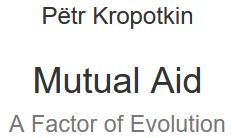
Footnotes 1 - 100
[1] Origin of Species, chap. iii.
[2] Nineteenth Century, Feb. 1888, p. 165.
[3] Leaving aside the pre-Darwinian writers, like Toussenel, Fée, and many others, several works containing many striking instances of mutual aid — chiefly, however, illustrating animal intelligence were issued previously to that date. I may mention those of Houzeau, Les facultés etales des animaux, 2 vols., Brussels, 1872; L. Büchner’s Aus dem Geistesleben der Thiere, 2nd ed. in 1877; and Maximilian Perty’s Ueber das Seelenleben der Thiere, Leipzig, 1876. Espinas published his most remarkable work, Les Sociétés animales, in 1877, and in that work he pointed out the importance of animal societies, and their bearing upon the preservation of species, and entered upon a most valuable discussion of the origin of societies. In fact, Espinas’s book contains all that has been written since upon mutual aid, and many good things besides. If I nevertheless make a special mention of Kessler’s address, it is because he raised mutual aid to the height of a law much more important in evolution than the law of mutual struggle. The same ideas were developed next year (in April 1881) by J. Lanessan in a lecture published in 1882 under this title: La lutte pour l’existence et l’association pour la lutte. G. Romanes’s capital work, Animal Intelligence, was issued in 1882, and followed next year by the Mental Evolution in Animals. About the same time (1883), Büchner published another work, Liebe und Liebes-Leben in der Thierwelt, a second edition of which was issued in 1885. The idea, as seen, was in the air.
[4] Memoirs (Trudy) of the St. Petersburg Society of Naturalists, vol. xi. 1880.
[5] See Appendix I.
[6] George J. Romanes’s Animal Intelligence, 1st ed. p. 233.
[7] Pierre Huber’s Les fourmis indigëes, Génève, 1861; Forel’s Recherches sur les fourmis de la Suisse, Zurich, 1874, and J.T. Moggridge’s Harvesting Ants and Trapdoor Spiders, London, 1873 and 1874, ought to be in the hands of every boy and girl. See also: Blanchard’s Métamorphoses des Insectes, Paris, 1868; J.H. Fabre’s Souvenirs entomologiques, Paris, 1886; Ebrard’s Etudes des mœurs des fourmis, Génève, 1864; Sir John Lubbock’s Ants, Bees, and Wasps, and so on.
[8] Forel’s Recherches, pp. 244, 275, 278. Huber’s description of the process is admirable. It also contains a hint as to the possible origin of the instinct (popular edition, pp. 158, 160). See Appendix II.
[9] The agriculture of the ants is so wonderful that for a long time it has been doubted. The fact is now so well proved by Mr. Moggridge, Dr. Lincecum, Mr. MacCook, Col. Sykes, and Dr. Jerdon, that no doubt is possible. See an excellent summary of evidence in Mr. Romanes’s work. See also Die Pilzgaerten einiger Süd-Amerikanischen Ameisen, by Alf. Moeller, in Schimper’s Botan. Mitth. aus den Tropen, vi. 1893.
[10] This second principle was not recognized at once. Former observers often spoke of kings, queens, managers, and so on; but since Huber and Forel have published their minute observations, no doubt is possible as to the free scope left for every individual’s initiative in whatever the ants do, including their wars.
[11] H.W. Bates, The Naturalist on the River Amazons, ii. 59 seq.
[12] N. Syevertsoff, Periodical Phenomena in the Life of Mammalia, Birds, and Reptiles of Voronèje, Moscow, 1855 (in Russian).
[13] A. Brehm, Life of Animals, iii. 477; all quotations after the French edition.
[14] Bates, p. 151.
[15] Catalogue raisonné des oiseaux de la faune pontique, in Démidoff’s Voyage; abstracts in Brehm, iii. 360. During their migrations birds of prey often associate. One flock, which H. Seebohm saw crossing the Pyrenees, represented a curious assemblage of “eight kites, one crane, and a peregrine falcon” (The Birds of Siberia, 1901, p. 417).
[16] Birds in the Northern Shires, p. 207.
[17] Max. Perty, Ueber das Seelenleben der Thiere (Leipzig, 1876), pp. 87, 103.
[18] G. H. Gurney, The House-Sparrow (London, 1885), p. 5.
[19] Dr. Elliot Couës, Birds of the Kerguelen Island, in Smithsonian Miscellaneous Collections, vol. xiii. No. 2, p. 11.
[20] Brehm, iv. 567.
[21] As to the house-sparrows, a New Zealand observer, Mr. T.W. Kirk, described as follows the attack of these “impudent” birds upon an “unfortunate” hawk. — “He heard one day a most unusual noise, as though all the small birds of the country had joined in one grand quarrel. Looking up, he saw a large hawk (C. gouldi — a carrion feeder) being buffeted by a flock of sparrows. They kept dashing at him in scores, and from all points at once. The unfortunate hawk was quite powerless. At last, approaching some scrub, the hawk dashed into it and remained there, while the sparrows congregated in groups round the bush, keeping up a constant chattering and noise” (Paper read before the New Zealand Institute; Nature, Oct. 10, 1891).
[22] Brehm, iv. 671 seq.
[23] R. Lendenfeld, in Der zoologische Garten, 1889.
[24] Syevettsoff’s Periodical Phenomena, p. 251.
[25] Seyfferlitz, quoted by Brehm, iv. 760.
[26] The Arctic Voyages of A.E. Nordenskjöld, London, 1879, p. 135. See also the powerful description of the St. Kilda islands by Mr. Dixon (quoted by Seebohm), and nearly all books of Arctic travel.
[27] See Appendix III.
[28] Elliot Couës, in Bulletin U.S. Geol. Survey of Territories, iv. No. 7, pp. 556, 579, etc. Among the gulls (Larus argentatus), Polyakoff saw on a marsh in Northern Russia, that the nesting grounds of a very great number of these birds were always patrolled by one male, which warned the colony of the approach of danger. All birds rose in such case and attacked the enemy with great vigour. The females, which had five or six nests together On each knoll of the marsh, kept a certain order in leaving their nests in search of food. The fledglings, which otherwise are extremely unprotected and easily become the prey of the rapacious birds, were never left alone (“Family Habits among the Aquatic Birds,” in Proceedings of the Zool. Section of St. Petersburg Soc. of Nat., Dec. 17, 1874).
[29] Brehm Father, quoted by A. Brehm, iv. 34 seq. See also White’s Natural History of Selborne, Letter XI.
[30] Dr. Couës, Birds of Dakota and Montana, in Bulletin U.S. Survey of Territories, iv. No. 7.
[31] It has often been intimated that larger birds may occasionally transport some of the smaller birds when they cross together the Mediterranean, but the fact still remains doubtful. On the other side, it is certain that some smaller birds join the bigger ones for migration. The fact has been noticed several times, and it was recently confirmed by L. Buxbaum at Raunheim. He saw several parties of cranes which had larks flying in the midst and on both sides of their migratory columns (Der zoologische Garten, 1886, p. 133).
[32] H. Seebohm and Ch. Dixon both mention this habit.
[33] The fact is well known to every field-naturalist, and with reference to England several examples may be found in Charles Dixon’s Among the Birds in Northern Shires. The chaffinches arrive during winter in vast flocks; and about the same time, i.e. in November, come flocks of bramblings; redwings also frequent the same places “in similar large companies,” and so on (pp. 165, 166).
[34] S.W. Baker, Wild Beasts, etc., vol. i. p. 316.
[35] Tschudi, Thierleben der Alpenwelt, p. 404.
[36] Houzeau’s Études, ii. 463.
[37] For their hunting associations see Sir E. Tennant’s Natural History of Ceylon, quoted in Romanes’s Animal Intelligence, p. 432.
[38] See Emil Hüter’s letter in L. Büchner’s Liebe.
[39] See Appendix IV.
[40] With regard to the viscacha it is very interesting to note that these highly-sociable little animals not only live peaceably together in each village, but that whole villages visit each other at nights. Sociability is thus extended to the whole species — not only to a given society, or to a nation, as we saw it with the ants. When the farmer destroys a viscacha-burrow, and buries the inhabitants under a heap of earth, other viscachas — we are told by Hudson — “come from a distance to dig out those that are buried alive” (l.c., p. 311). This is a widely-known fact in La Plata, verified by the author.
[41] Handbuch für Jäger und Jagdberechtigte, quoted by Brehm, ii. 223.
[42] Buffon’s Histoire Naturelle.
[43] In connection with the horses it is worthy of notice that the quagga zebra, which never comes together with the dauw zebra, nevertheless lives on excellent terms, not only with ostriches, which are very good sentries, but also with gazelles, several species of antelopes, and gnus. We thus have a case of mutual dislike between the quagga and the dauw which cannot be explained by competition for food. The fact that the quagga lives together with ruminants feeding on the same grass as itself excludes that hypothesis, and we must look for some incompatibility of character, as in the case of the hare and the rabbit. Cf., among others, Clive Phillips-Wolley’s Big Game Shooting (Badminton Library), which contains excellent illustrations of various species living together in East Africa.
[44] Our Tungus hunter, who was going to marry, and therefore was prompted by the desire of getting as many furs as he possibly could, was beating the hill-sides all day long on horseback in search of deer. His efforts were not rewarded by even so much as one fallow deer killed every day; and he was an excellent hunter.
[45] According to Samuel W. Baker, elephants combine in larger groups than the “compound family.” “I have frequently observed,” he wrote, “in the portion of Ceylon known as the Park Country, the tracks of elephants in great numbers which have evidently been considerable herds that have joined together in a general retreat from a ground which they considered insecure” (Wild Beasts and their Ways, vol. i. p. 102).
[46] Pigs, attacked by wolves, do the same (Hudson, l.c.).
[47] Romanes’s Animal Intelligence, p. 472.
[48] Brehm, i. 82; Darwin’s Descent of Man, ch. iii. The Kozloff expedition of 1899–1901 have also had to sustain in Northern Thibet a similar fight.
[49] The more strange was it to read in the previously-mentioned article by Huxley the following paraphrase of a well-known sentence of Rousseau: “The first men who substituted mutual peace for that of mutual war — whatever the motive which impelled them to take that step — created society” (Nineteenth Century, Feb. 1888, p. 165). Society has not been created by man; it is anterior to man.
[50] Such monographs as the chapter on “Music and Dancing in Nature” which we have in Hudson’s Naturalist on the La Plata, and Carl Gross’ Play of Animals, have already thrown a considerable light upon an instinct which is absolutely universal in Nature.
[51] Not only numerous species of birds possess the habit of assembling together — in many cases always at the same spot — to indulge in antics and dancing performances, but W.H. Hudson’s experience is that nearly all mammals and birds (“probably there are really no exceptions”) indulge frequently in more or less regular or set performances with or without sound, or composed of sound exclusively (p. 264).
[52] For the choruses of monkeys, see Brehm.
[53] Haygarth, Bush Life in Australia, p. 58.
[54] To quote but a few instances, a wounded badger was carried away by another badger suddenly appearing on the scene; rats have been seen feeding a blind couple (Seelenleben der Thiere, p. 64 seq.). Brehm himself saw two crows feeding in a hollow tree a third crow which was wounded; its wound was several weeks old (Hausfreund, 1874, 715; Büchner’s Liebe, 203). Mr. Blyth saw Indian crows feeding two or three blind comrades; and so on.
[55] Man and Beast, p. 344.
[56] L.H. Morgan, The American Beaver, 1868, p. 272; Descent of Man, ch. iv.
[57] One species of swallow is said to have caused the decrease of another swallow species in North America; the recent increase of the missel-thrush in Scotland has caused the decrease of the song.thrush; the brown rat has taken the place of the black rat in Europe; in Russia the small cockroach has everywhere driven before it its greater congener; and in Australia the imported hive-bee is rapidly exterminating the small stingless bee. Two other cases, but relative to domesticated animals, are mentioned in the preceding paragraph. While recalling these same facts, A.R. Wallace remarks in a footnote relative to the Scottish thrushes: “Prof. A. Newton, however, informs me that these species do not interfere in the way here stated” (Darwinism, p. 34). As to the brown rat, it is known that, owing to its amphibian habits, it usually stays in the lower parts of human dwellings (low cellars, sewers, etc.), as also on the banks of canals and rivers; it also undertakes distant migrations in numberless bands. The black rat, on the contrary, prefers staying in our dwellings themselves, under the floor, as well as in our stables and barns. It thus is much more exposed to be exterminated by man; and we cannot maintain, with any approach to certainty, that the black rat is being either exterminated or starved out by the brown rat and not by man.
[58] “But it may be urged that when several closely-allied species inhabit the same territory, we surely ought to find at the present time many transitional forms.... By my theory these allied species are descended from a common parent; and during the process of modification, each has become adapted to the conditions of life of its own region, and has supplanted and exterminated its original parent-form and all the transitional varieties between its past and present states” (Origin of Species, 6th ed. p. 134); also p. 137, 296 (all paragraph “On Extinction”).
[59] According to Madame Marie Pavloff, who has made a special study of this subject, they migrated from Asia to Africa, stayed there some time, and returned next to Asia. Whether this double migration be confirmed or not, the fact of a former extension of the ancestor of our horse over Asia, Africa, and America is settled beyond doubt.
[60] The Naturalist on the River Amazons, ii. 85, 95.
[61] Dr. B. Altum, Waldbeschädigungen durch Thiere und Gegenmittel (Berlin, 1889), pp. 207 seq.
[62] Dr. B. Altum, ut supra, pp. 13 and 187.
[63] A. Becker in the Bulletin de la Société des Naturalistes de Moscou, 1889, p. 625.
[64] See Appendix V.
[65] Russkaya Mysl, Sept. 1888: “The Theory of Beneficency of Struggle for Life, being a Preface to various Treatises on Botanics, Zoology, and Human Life,” by an Old Transformist.
[66] “One of the most frequent modes in which Natural Selection acts is, by adapting some individuals of a species to a somewhat different mode of life, whereby they are able to seize unappropriated places in Nature” (Origin of Species, p. 145) — in other words, to avoid competition.
[67] See Appendix VI.
[68] Nineteenth Century, February 1888, p. 165
[69] The Descent of Man, end of ch. ii. pp. 63 and 64 of the 2nd edition.
[70] Anthropologists who fully endorse the above views as regards man nevertheless intimate, sometimes, that the apes live in polygamous families, under the leadership of “a strong and jealous male.” I do not know how far that assertion is based upon conclusive observation. But the passage from Brehm’s Life of Animals, which is sometimes referred to, can hardly be taken as very conclusive. It occurs in his general description of monkeys; but his more detailed descriptions of separate species either contradict it or do not confirm it. Even as regards the cercopithèques, Brehm is affirmative in saying that they “nearly always live in bands, and very seldom in families” (French edition, p. 59). As to other species, the very numbers of their bands, always containing many males, render the “polygamous family” more than doubtful further observation is evidently wanted.
[71] Lubbock, Prehistoric Times, fifth edition, 1890.
[72] That extension of the ice-cap is admitted by most of the geologists who have specially studied the glacial age. The Russian Geological Survey already has taken this view as regards Russia, and most German specialists maintain it as regards Germany. The glaciation of most of the central plateau of France will not fail to be recognized by the French geologists, when they pay more attention to the glacial deposits altogether.
[73] Prehistoric Times, pp. 232 and 242.
[74] Bachofen, Das Mutterrecht, Stuttgart, 1861; Lewis H. Morgan, Ancient Society, or Researches in the Lines of Human Progress from Savagery through Barbarism to Civilization, New York, 1877; J.F. MacLennan, Studies in Ancient History, 1st series, new edition, 1886; 2nd series, 1896; L. Fison and A.W. Howitt, Kamilaroi and Kurnai, Melbourne. These four writers — as has been very truly remarked by Giraud Teulon, — starting from different facts and different general ideas, and following different methods, have come to the same conclusion. To Bachofen we owe the notion of the maternal family and the maternal succession; to Morgan — the system of kinship, Malayan and Turanian, and a highly gifted sketch of the main phases of human evolution; to MacLennan — the law of exogeny; and to Fison and Howitt — the cuadro, or scheme, of the conjugal societies in Australia. All four end in establishing the same fact of the tribal origin of the family. When Bachofen first drew attention to the maternal family, in his epoc.making work, and Morgan described the clan-organization, — both concurring to the almost general extension of these forms and maintaining that the marriage laws lie at the very basis of the consecutive steps of human evolution, they were accused of exaggeration. However, the most careful researches prosecuted since, by a phalanx of students of ancient law, have proved that all races of mankind bear traces of having passed through similar stages of development of marriage laws, such as we now see in force among certain savages. See the works of Post, Dargun, Kovalevsky, Lubbock, and their numerous followers: Lippert, Mucke, etc.
[75] See Appendix VII.
[76] For the Semites and the Aryans, see especially Prof. Maxim Kovalevsky’s Primitive Law (in Russian), Moscow, 1886 and 1887. Also his Lectures delivered at Stockholm (Tableau des origines et de l’évolution de la famille et de la propriété, Stockholm, 1890), which represents an admirable review of the whole question. Cf. also A. Post, Die Geschlechtsgenossenschaft der Urzeit, Oldenburg 1875.
[77] It would be impossible to enter here into a discussion of the origin of the marriage restrictions. Let me only remark that a division into groups, similar to Morgan’s Hawaian, exists among birds; the young broods live together separately from their parents. A like division might probably be traced among some mammals as well. As to the prohibition of relations between brothers and sisters, it is more likely to have arisen, not from speculations about the bad effects of consanguinity, which speculations really do not seem probable, but to avoid the too-easy precocity of like marriages. Under close cohabitation it must have become of imperious necessity. I must also remark that in discussing the origin of new customs altogether, we must keep in mind that the savages, like us, have their “thinkers” and savants — wizards, doctors, prophets, etc. — whose knowledge and ideas are in advance upon those of the masses. United as they are in their secret unions (another almost universal feature) they are certainly capable of exercising a powerful influence, and of enforcing customs the utility of which may not yet be recognized by the majority of the tribe.
[78] Col. Collins, in Philips’ Researches in South Africa, London, 1828. Quoted by Waitz, ii. 334.
[79] Lichtenstein’s Reisen im südlichen Afrika, ii. Pp. 92, 97. Berlin, 1811.
[80] Waitz, Anthropologie der Naturvolker, ii. pp. 335 seq. See also Fritsch’s Die Eingeboren Afrika’s, Breslau, 1872, pp. 386 seq.; and Drei Jahre in Süd Afrika. Also W. Bleck, A Brief Account of Bushmen Folklore, Capetown, 1875.
[81] Elisée Reclus, Géographie Universelle, xiii. 475.
[82] P. Kolben, The Present State of the Cape of Good Hope, translated from the German by Mr. Medley, London, 1731, vol. i. pp. 59, 71, 333, 336, etc.
[83] Quoted in Waitz’s Anthropologie, ii. 335 seq.
[84] The natives living in the north of Sidney, and speaking the Kamilaroi language, are best known under this aspect, through the capital work of Lorimer Fison and A.W. Howitt, Kamilaroi and Kurnaii, Melbourne, 1880. See also A.W. Howitt’s “Further Note on the Australian Class Systems,” in Journal of the Anthropological Institute, 1889, vol. xviii. p. 31, showing the wide extension of the same organization in Australia.
[85] The Folklore, Manners, etc., of Australian Aborigines, Adelaide, 1879, p. 11.
[86] Gray’s Journals of Two Expeditions of Discovery in North-West and Western Australia, London, 1841, vol. ii. pp. 237, 298.
[87] Bulletin de la Société d’Anthropologie, 1888, vol. xi. p. 652. I abridge the answers.
[88] Bulletin de la Société d’Anthropologie, 1888, vol. xi. p. 386.
[89] The same is the practice with the Papuas of Kaimani Bay, who have a high reputation of honesty. “It never happens that the Papua be untrue to his promise,” Finsch says in Neuguinea und seine Bewohner, Bremen, 1865, p. 829.
[90] Izvestia of the Russian Geographical Society, 1880, pp. 161 seq. Few books of travel give a better insight into the petty details of the daily life of savages than these scraps from Maklay’s notebooks.
[91] L.F. Martial, in Mission Scientifique au Cap Horn, Paris, 1883, vol. i. pp. 183–201.
[92] Captain Holm’s Expedition to East Greenland.
[93] In Australia whole clans have been seen exchanging all their wives, in order to conjure a calamity (Post, Studien zur Entwicklungsgeschichte des Familienrechts, 1890, p. 342). More brotherhood is their specific against calamities.
[94] Dr. H. Rink, The Eskimo Tribes, p. 26 (Meddelelser om Grönland, vol. xi. 1887).
[95] Dr. Rink, loc. cit. p. 24. Europeans, grown in the respect of Roman law, are seldom capable of understanding that force of tribal authority. “In fact,” Dr. Rink writes, “it is not the exception, but the rule, that white men who have stayed for ten or twenty years among the Eskimo, return without any real addition to their knowledge of the traditional ideas upon which their social state is based. The white man, whether a missionary or a trader, is firm in his dogmatic opinion that the most vulgar European is better than the most distinguished native.” — The Eskimo Tribes, p. 31.
[96] Dall, Alaska and its Resources, Cambridge, U.S., 1870.
[97] Dall saw it in Alaska, Jacobsen at Ignitok in the vicinity of the Bering Strait. Gilbert Sproat mentions it among the Vancouver indians; and Dr. Rink, who describes the periodical exhibitions just mentioned, adds: “The principal use of the accumulation of personal wealth is for periodically distributing it.” He also mentions (loc. cit. p. 31) “the destruction of property for the same purpose,’ (of maintaining equality).
[98] See Appendix VIII.
[99] Veniaminoff, Memoirs relative to the District of Unalashka (Russian), 3 vols. St. Petersburg, 1840. Extracts, in English, from the above are given in Dall’s Alaska. A like description of the Australians’ morality is given in Nature, xlii. p. 639.
[100] It is most remarkable that several writers (Middendorff, Schrenk, O. Finsch) described the Ostyaks and Samoyedes in almost the same words. Even when drunken, their quarrels are insignificant. “For a hundred years one single murder has been committed in the tundra;” “their children never fight;” “anything may be left for years in the tundra, even food and gin, and nobody will touch it;” and so on. Gilbert Sproat “never witnessed a fight between two sober natives” of the Aht Indians of Vancouver Island. “Quarreling is also rare among their children.” (Rink, loc. cit.) And so on.
#organization#revolution#mutual aid#anarchism#daily posts#communism#anti capitalist#anti capitalism#late stage capitalism#anarchy#anarchists#libraries#leftism#social issues#economy#economics#climate change#anarchy works#environmentalism#environment#solarpunk#anti colonialism#a factor of evolution#petr kropotkin
16 notes
·
View notes
Text
SAINT OF THE DAY (October 16)

On October 16, we celebrate the feast of St. Gerard Majella.
St. Gerard was born on 6 April 1726 as the son of a tailor. He grew up about fifty miles south of Naples in Muro Lucano, Italy, in a large, poor family.
When Gerard was only 12, his father Dominic Majella entered eternal rest. Upon the death of his father, his mother, beholden to poverty, sent Gerard away to live with his uncle.
Gerard thereafter became an apprentice to a tailor. This tailor treated him well; however, the foreman treated him poorly.
After serving as a sewing apprentice for a couple years, he instead became a servant in the household of the bishop of Lacedonia, who was a cantankerous master.
Upon the death of the bishop in 1745, he returned home. At the age of 21, he became a journeyman.
He split his earnings for his mother and the poor, and made offerings for the holy souls in purgatory. Afterwards, he opened his own tailor shop.
At a young age, Gerard tried to join the local Capuchins, but he was turned down twice due to his youth and poor health.
He also tried to become a hermit but that too was not God's will for him.
He then entered the Congregation of the Most Holy Redeemer in 1749 and professed of perpetual vows under the Redemptorist's founder, Saint Alphonsus Liguori, in 1751.
He served as tailor and infirmarian. He became known for his extraordinary supernatural gifts of bilocation, prophecy, ecstasies, visions, and infused knowledge.
Though not ordained to the holy order of priest, his spiritual direction and advice were sought by many among the clergy and communities of nuns, to which he also gave conferences.
He was most successful in converting sinners. He was also widely known for his sanctity and charity.
In 1754, he was calumniated and accused of lechery by a woman named Neria Caggiano.
Caggiano later admitted her charge was a lie. Even before she admitted to her falsehood, Gerard did not deny her charges.
As these charges were still up in the air, his superiors became suspicious, so they put him under surveillance and excluded him from communion for months until the girl admitted that she had lied.
When asked by Saint Alphonsus why he had kept silent in such circumstances, Gerard replied that he thought such patience was required in the face of unjust accusations.
As he bore this calumny with such humility and patience, Saint Alphonsus said, "Brother Gerard is a saint."
Gerard was sent to Naples soon after, but when the house was inundated by visitors wanting to see him, he was sent to Caposele a few months later.
He served as the porter there and ministered to the poor of the town. He spent the last few months of his life raising funds for new buildings at Caposele.
Just prior to his death, he visited his friends, the Pirofalo family. One of the daughters ran and called after him as he left the home, as he dropped his handkerchief.
Speaking through the gift of prophecy, he replied, "Keep it. It will be useful to you someday."
Years down the road, when this young woman was in danger of childbirth, she recalled these words of St. Gerard and requested the handkerchief.
The handkerchief was applied to her, thus a miracle: her pain immediately ceased and she gave birth to a healthy child.
St. Gerard died of tuberculosis on 16 October 1755 at the age of 29 in Caposele.
He was beatified by Pope Leo XIII on 29 January 1893. He was canonized by Pope Saint Pius X on 11 December 1904.
He is the patron saint of mothers, motherhood, expectant mothers, childbirth, children, pregnant women, unborn children, the pro-life movement, the falsely accused, good confessions, and lay brothers.
4 notes
·
View notes
Text
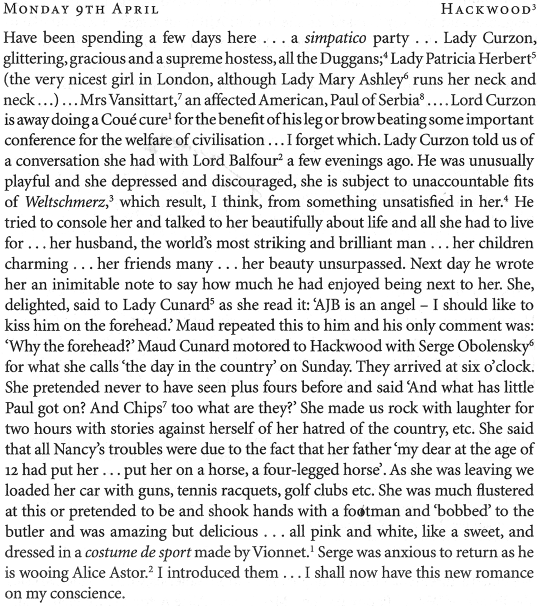
Henry ‘Chips’ Channon: The Diaries (Vol. 1), 1918-38, entry for 9th April 1923
—
Monday 9th April — Hackwood¹
Have been spending a few days here … a simpatico party … Lady Curzon, glittering, gracious and a supreme hostess, all the Duggans;² Lady Patricia Herbert³ (the very nicest girl in London, although Lady Mary Ashley⁴ runs her neck and neck …) … Mrs Vansittart,⁵ an affected American, Paul of Serbia⁶ …. Lord Curzon is away doing a Coué cure⁷ for the benefit of his leg or brow beating some important conference for the welfare of civilisation … I forget which. Lady Curzon told us of a conversation she had with Lord Balfour⁸ a few evenings ago. He was unusually playful and she depressed and discouraged, she is subject to unaccountable fits of Weltschmerz,⁹ which result, I think, from something unsatisfied in her.¹⁰ He tried to console her and talked to her beautifully about life and all she had to live for … her husband, the world’s most striking and brilliant man … her children charming … her friends many … her beauty unsurpassed. Next day he wrote her an inimitable note to say how much he had enjoyed being next to her. She, delighted, said to Lady Cunard¹¹ as she read it: ‘AJB is an angel — I should like to kiss him on the forehead’. Maud repeated this to him and his only comment was: ‘Why the forehead?’ Maud Cunard motored to Hackwood with Serge Obolensky¹² for what she calls ‘the day in the country’ on Sunday. They arrived at six o’clock. She pretended never to have seen plus fours before and said ‘And what has little Paul got on? And Chips¹³ too what are they?’ She made us rock with laughter for two hours with stories about herself and her hatred of the country, etc. She said that all Nancy’s troubles were due to the fact that her father ‘my dear at the age of 12 had put her … put her on a horse, a four-legged horse’. As she was leaving we loaded her car with guns, tennis racquets, golf clubs, etc. She was much flustered at this or pretended to be and shook hands with a footman and ‘bobbed’ to the butler and was amazing but delicious … all pink and white, like a sweet, and dressed in a costume de sport made by Vionnet.¹⁴ Serge was anxious to return as he is wooing Alice Astor.¹⁵ I introduced them … I shall now have this new romance on my conscience.
—
1. Hackwood Park, near Basingstoke in Hampshire, rented by Lord Curzon from 1906 until 1925.
2. Lady Curzon’s children by her first marriage: Alfred Duggan (1903–64), who became a minor novelist; Hubert Duggan (1904–43), Tory MP for Acton from 1931 to 1943 and anti-appeaser in the 1930s; and (Grace) Marcella Duggan (1907–95).
3. Patricia Herbert (1904–94), by courtesy Lady Patricia Herbert from 1913, daughter of the 15th Earl of Pembroke and 12th Earl of Montgomery, married in 1928 William Henry Smith, 3rd Viscount Hambleden (1903–48). She was a Lady of the Bedchamber to Queen Elizabeth from 1937 until 1994.
4. Lady Mary Sibell Ashley-Cooper (1902–36), daughter of the 9th Earl of Shaftesbury, married in 1928 Napier George Henry Sturt (1896–1940), who in 1919 succeeded his father as 3rd Baron Alington of Crichel. He died on active service in Egypt during the Second World War, though of drink rather than in action.
5. Gladys Robinson-Duff (1892–1928), daughter of General William C. Heppenheimer of the United States, married in 1921 Robert Gilbert Vansittart (1881–1957), who would be Permanent Under-Secretary at the Foreign Office from 1930 to 1938, and who would be raised to the peerage in 1941 as 1st Baron Vansittart. Vansittart was also an accomplished novelist, playwright and poet.
6. Prince Paul of Yugoslavia (1893–1976) had known Channon at Oxford and would remain one of his closest friends, and be Prince Regent of Yugoslavia (the Kingdom of the Serbs, Croats and Slovenes) from 1934 to 1941 during the minority of Peter II. He was the nephew of King Peter I and married Princess Olga of Greece and Denmark (1903–97), sister-in-law of Channon’s other closest friend, the Duke of Kent. After treating with the Germans in 1941 Paul was forced from Yugoslavia and forbidden ever to return; the post-war communist regime stripped him of his property and proclaimed him an enemy of the state. Until 1945 the British authorities held him in Kenya under house arrest. Serbia rehabilitated him posthumously in 2011, after which he was reburied with Princess Olga and their son Nicholas.
7. A psychotherapy-based cure featuring auto-suggestion, fashionable but heavily criticised at the time, developed by Émile Coué de la Châtaigneraie (1857–1926), a French psychologist.
8. A. J. Balfour, raised to an earldom in 1922.
9. World-weariness.
10. Curzon was desperate for a male heir (he had three daughters from his first marriage) to the earldom and marquessate he had obtained; various medical procedures had been followed to help Lady Curzon conceive, but no child resulted and the marriage was strained accordingly.
11. Maud Alice Burke (1872–1948), born in San Francisco, married in 1895 Sir Bache Cunard, 3rd Bt (1851–1925), grandson of the shipping line’s founder. They had lived largely apart since 1911, Cunard basing himself in Leicestershire where he enjoyed field sports. In London with their daughter Nancy Clara (1896–1965), Lady Cunard – who after her husband’s death became known as ‘Emerald’ – established one of the leading salons of the era, which thrived until the Second World War. After separating from her husband she became the mistress of Sir Thomas Beecham, the conductor, and funded many of his musical projects.
12. Prince Sergei (‘Serge’) Platonovich Obolensky Neledinsky-Meletsky (1890–1978) had been educated at Oxford and became part of the Russian diaspora after the revolution. He emigrated to America and became a successful businessman.
13. The first time in the diaries that he refers to his nickname.
14. Madeleine Vionnet (1876–1975) was one of Paris’s leading fashion designers of the interwar years.
15. Ava Alice Muriel Astor (1902–56), daughter of John Jacob Astor IV. She and Obolensky married in 1924 and divorced in 1932. She would marry four times before her death at the age of 54.
#chips channon#channon diaries#1923#1920s#grace curzon#alfred duggan#hubert duggan#marcella rice#patricia hambleden#mary alington#gladys vansittart#prince paul of yugoslavia#george curzon#arthur balfour#emerald cunard#prince serge obolensky#nancy cunard#madeleine vionnet#alice astor#hackwood park
6 notes
·
View notes
Text
Chapter 1
A storm had rolled into New York. So far a casual thunderstorm and nothing major.
“Cancel those picnics New Yorkers unless you like soggy sandwiches. We'd also suggest seeking out potential storm shelters if you haven't made plans yet.” The newscaster on Channel 6 news suggested. Donnie scoffed at the tv.
“Storm shelters my shell. We haven't had a tornado in NYC since 1995 and haven't been hit by a hurricane since 1893 unless you count 2021.” The tv went dark the subtle illumination it gave off disappearing. The 3 turtle brothers and their human friends turned to the purple-clad brother, who shrugged in response.
“I've been wrong before.” he started as the generator kicked in bringing the news station back to life.
“Folks were gonna suggest you take shelter as we could be experiencing extreme storms passing over that could potentially lead to severe weather.” the tv switched to live footage of the Atlantic Ocean where the water was raging and crashing along the coast lightning striking anything and everything in its path. An alert went off in the lair signaling that something was happening at the underwater entrance. The team groaned as Donnie rose from his spot on the couch to investigate the cause of the alarm.
When he arrived he turned off the alarm and turned his attention to the cameras. All seemed to be well, but he took a closer look. Only to catch a glimpse of a humanoid figure in the camera that sat above water.
Whoever it was was thrown from the sky into the water lightning following them striking the surface as they submerged. Another figure appeared out of the dark clouds.
“I'm guys you might want to take a look at this,” Donnie suggested to the living room inhabitants who emerged a few seconds later to watch the screen with him.
The figure that fell into the ocean emerged once more surrounded by lightning. The two figures clashed and shockwave went out in all directions the two figures engaged as a much more severe storm began to roll onto the shores of New York. When suddenly the figure surrounded by lightning began to dim. The other figure pulled something out of them and let them crash into the ocean. The figure in the air began to rise once more. Taking off in a burst of speed into the clouds. The storm began to slow and calm down.
“Should we go see what that was,” Mikey questioned they All looked at Leo.
“You're the leader,” Ralph said crossing his arms Leo looked back at the screen.
“Well, I'm going I have to see what this, is,” Donnie said rising from his desk and walking to grab some gear before he made his way over to the turtle sub.
“I'm coming too.” Mikey began to follow in step with his brother. Leo sighed and he to followed suit along with Raph Casey and April. The six of them crammed into the sub and made their way to investigate.
Upon arrival, the turtles saw the humanoid figure sinking deeper and deeper into the ocean in a heap of white fabric a light trail of gold following along.
“Well, we can't just sit here and watch them drown,” April said.
“I'll get them.” raph took the initiative and swam out of the sub over to the figure. Upon closer inc]section he realized it was a girl. Her hair floated around her face tickling his skin as he wrapped his arms around her. He swam back to the sub lifting her inside.
4 notes
·
View notes
Text
Today In Women’s History Month we celebrate the birthdays of Louise-Florence-Pétronille Tardieu d’Esclavelles and Wanda Hazel Gág
Louise-Florence-Pétronille Tardieu d’Esclavelles, dame de la Live d’Épinay, byname Madame D’épinay, (born March 11, 1726, Valenciennes, Fr.—died April 17, 1783, Paris), a distinguished figure in advanced literary circles in 18th-century France. Though she wrote a good deal herself, she is more famous for her friendships with three of the outstanding French writers and thinkers of her day, Denis Diderot, Baron Friedrich de Grimm, and Jean-Jacques Rousseau.
Mme d’Épinay interested herself in literature and the welfare of men of letters after the breakdown of her marriage to Denis-Joseph de La Live d’Épinay, a financier. She set up a congenialsalon in her country house at La Chevrette, near Montmorency, and offered hospitality to the Philosophes, the leading intellectual figures of the period immediately prior to the French Revolution. Her friendship with Grimm was long and untroubled, and Mme d’Épinay collaborated with him on his famous correspondence. Her association with Rousseau, on the other hand, was brief and stormy: in 1756 he accepted her offer of accommodation in the “Hermitage,” a small dwelling near her country house, and wrote his novel La Nouvelle Héloïsethere. But then he quarreled with his hostess, and the two became implacable foes. Mme d’Épinay was the author of several novels and works on education, but her writings are of interest now chiefly for their autobiographical revelations.
Her Wikipedia page had more information about her works
Her pseudo-memoires are written in the form of a sort of autobiographic romance, L'Histoire de Madame de Montbrillant, begun when she was thirty but never published in her lifetime. It intersperses fictionalized set pieces exhibiting the sensibilité of the earliest generation of Romantics,[6] with genuine letters and autobiographical material. Bequeathed to Baron Grimm, a mangled version of the manuscript was edited by J. P. A. Parison and J. C. Brunet (Paris, 1818) as Mémoires et correspondance de Madame d'Épinay with all the names changed to identify the supposed originals: Madame d'Épinay figures in it as Madame de Montbrillant, and René is generally recognized as Rousseau, Volx as Grimm, Gamier as Diderot, who is sometimes credited with major interventions in the text. The work has had a checkered career since.[7] The only accurate edition is George Roth, ed. Les Pseudo-mémoires de Madame d'Épinay, 3 vols., 1951.
Other works
Her Conversations d'Émilie, a dialogue recollecting the education of her granddaughter, Émilie de Belsunce, was published in 1774.[8] The Mémoires et Correspondance de Mme d'Épinay, renfermant un grand nombre de lettres inédites de Grimm, de Diderot, et de J.-J. Rousseau, ainsi que des details, &c., was published at Paris (1818) from a manuscript which she had bequeathed to Grimm.
Many of Madame d'Épinay's letters are contained in the Correspondance de l'abbé Galiani (1818), which provided material for Francis Steegmuller's joint biography,[9] and have since appeared in a definitive redaction.[10] Two anonymous works, Lettres à mon fils (Geneva, 1758) and Mes moments heureux (Geneva, 1759), are also by Madame d'Épinay.
In January 1783, three months before her death, she was awarded the Prix Monyon, recently established by the Académie to honour the author of the "book published in the current year that might be of most benefit to society"; it was her Conversations d'Émilie (1774).[11]
Wanda Hazel Gág, (born March 11, 1893, New Ulm, Minnesota, U.S.—died June 27, 1946, New York, New York), American artist and author whose dynamic visual style imbued the often commonplace subjects of both her serious art and her illustrated books for children with an intense vitality.
Gág was the daughter of a Bohemian immigrant artist. While attending high schoolin Minnesota, she helped support her family by contributing drawings to a children’s supplement to the Minneapolis Journal. She attended the St. Paul Art School on a scholarship, and from 1915 to 1917 she studied at the Minneapolis School of Art. In 1917 she traveled to New York City and entered the Art Students League, where she studied with John Sloan and other noted teachers.

A show of Gág’s drawings, lithographs, and woodcuts at the Weyhe Gallery in New York in 1926 brought her first recognition as a serious artist, and subsequent shows there in 1928, 1930, and 1940 increased her reputation. She was represented in the Museum of Modern Art’s 1939 exhibition “Art in Our Time,” which was presented at the time of the New York World’s Fair. At the suggestion of a children’s book editor, she wrote and illustrated Millions of Cats (1928), which became a classic children’s book. Her subsequent books for children include The Funny Thing (1929), A.B.C. Bunny (1933), Gone Is Gone (1935), and Nothing at All(1941). She also translated and illustrated Tales from Grimm (1936), Snow White and the Seven Dwarfs (1938), Three Gay Tales from Grimm (1943), and More Tales from Grimm (1947). Growing Pains: Diaries and Drawings for the Years 1908–1917 (1940, reprinted 1984) is a memoir based on her journals.
#women’s history month#Louise-Florence-Pétronille Tardieu d’Esclavelles#March 11 1726#Books by women#L'Histoire de Madame de Montbrillant#Conversations d'Émilie#Lettres à mon fils#Mes moments heureux#Wanda Hazel Gág#Millions of Cats#The Funny Thing#A.B.C. Bunny#Gone is Gone#Nothing at All#Tales from Grimm#Three Gay Tales from Grimm#More Tales from Grimm#Growing Pains: Diaries and Drawings for the Years 1908-1917#March 11 1893#Women writers
2 notes
·
View notes
Text
Wedding photos of the last four british monarchs :
1) King Edward VII and Queen Alexandra (March 30, 1863)
2) King George V and Queen Mary (July 6, 1893)
3) King George VI and Queen Elizabeth (April 26, 1923)
4) Queen Elizabeth II and Prince Philip (November 20, 1947)
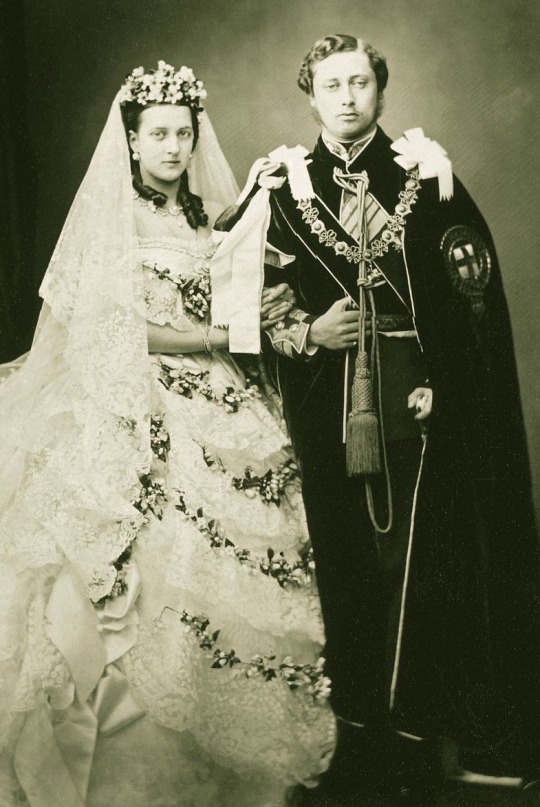
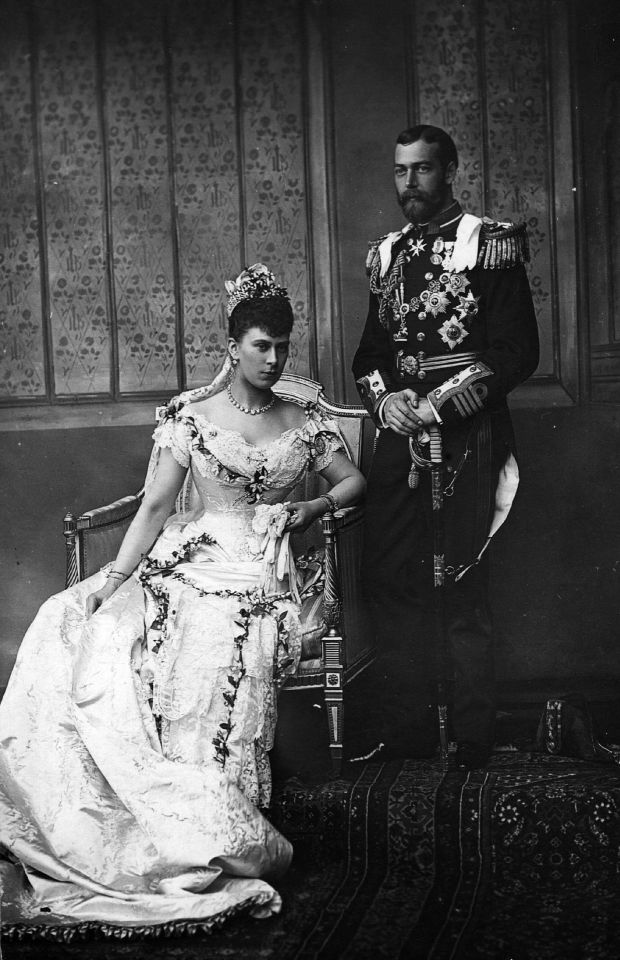


9 notes
·
View notes
Photo
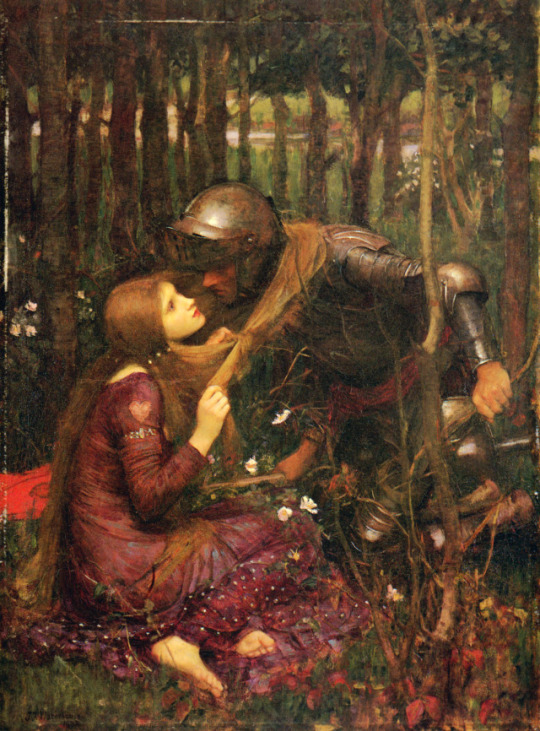
“The Merciless Beauty”, 1893, by John William Waterhouse RA (English painter known for working first in the Academic style and for then embracing the Pre-Raphaelite Brotherhood's style and subject matter. His artworks were known for their depictions of women from both ancient Greek mythology and Arthurian legend; Born: April 6, 1849, Rome, Italy - Died: February 10, 1917, London, United Kingdom).
5 notes
·
View notes
Text

I posted 23,103 times in 2022
That's 1,874 more posts than 2021!
281 posts created (1%)
22,822 posts reblogged (99%)
Blogs I reblogged the most:
@chananderlandersalamander
@keepcalmandcarryfire
@odd-gelato
@blackmesasourvoice
@captain-harpo
I tagged 10,276 of my posts in 2022
#queer - 908 posts
#video - 814 posts
#animals - 472 posts
#loop zoop - 456 posts
#trans - 434 posts
#mm... monkee - 423 posts
#fuckor - 411 posts
#crapitalism - 396 posts
#trans vision board - 323 posts
#mfw - 320 posts
Longest Tag: 139 characters
#any female born after 1893 can’t cook… all they know is shake a cocktail ‚ earn they own living‚ charleston‚ play bridge ‚ drive car & wise
My Top Posts in 2022:
#5
tumblr_video
this scene lives in my heart
389 notes - Posted February 6, 2022
#4
tumblr_video
every time peter calls mike “michael"
661 notes - Posted February 7, 2022
#3
-go back in time
-find george harrison
-stop him from smoking
-return to the present
-polygamy is legal (butterfly effect, hard to explain)
1,026 notes - Posted June 28, 2022
#2
one of my roommates at anthrocon told his bf "i wouldn't look good in a crop top because i have a happy trail" you FOOL that's like saying "this bread won't taste good because it has garlic" like that's the POINT that's the FLAVOR
1,425 notes - Posted July 22, 2022
My #1 post of 2022

1,870 notes - Posted April 9, 2022
Get your Tumblr 2022 Year in Review →
#tumblr2022#year in review#my 2022 tumblr year in review#your tumblr year in review#blog#long post#about me
2 notes
·
View notes
Text
KE AUPUNI UPDATE - MAY 2024

Empty Apologies…
On January 17, 1993, coinciding with the solemn observance of the 100th anniversary of the overthrow of the Hawaiian Kingdom, the United Church of Christ (UCC) formally apologized for the role that its leaders played in the overthrow of the Hawaiian Kingdom in 1893. The apology was publicly announced and presented by representatives of the national leadership of the UCC.
That apology prompted the Hawaii delegation to the US Congress to convince their colleagues to pass a Joint Resolution of Congress that was signed into law as US Public Law 103-150 by US President William Jefferson Clinton on November 23, 1993. By this public law the US also apologized for its involvement in the overthrow of the Hawaiian Kingdom in 1893.
What has become of these high profile public apologies? The UMC Apology was followed a year later with pledges of millions in money and property as compensation from the UCC to the Hawaiian people for the wrongful act.
The US Apology pledged to initiate reconciliation between the US and the native Hawaiians who suffered the consequences of the wrongful taking of their nation.
In the 31 years since the issuance of these apologies, there has been no measurable or noticeable movement toward reconciliation. In fact conditions have grown worse. The US and the UCC have demonstrated by their inaction not only lack of follow-through but no intention of ever correcting the wrongs they admitted they committed.
Years ago, a friend said to me, “The trouble with people today is they think… if we say it; we have done it!” This is so true. Apologies today mean nothing as people do not seem to think they need to do anything to repair a wrong or offense. No acts of repentance, no making things pono. Just say sorry, then move on.
In April, a resolution was adopted by the General conference of the United Methodist Church (UMC) apologizing for the role its pastors and churches of that denomination played in the overthrow of the Hawaiian Kingdom in 1893 and after. Announcement of this recent apology by the UMC is pending. The resolution calls for “Acts of Repentance.” Will this prove to be sincere? Or will it go the way of the UCC’s “compensation” and the US’ “reconciliation”?
Hopefully, this will not be another empty apology that makes no difference except to give self-serving offenders a platform to absolve themselves of their own guilt and move on.
Insincere apologies are not only empty words. When issued with no effort to repair the wrong, they are insulting and more offensive to those to whom the apologies are addressed… and to all fair minded people in this world.
“Love of country is deep-seated in the breast of every Hawaiian, whatever his station.” — Queen Liliʻuokalani
----------
Ua mau ke ea o ka ʻāina i ka pono. The sovereignty of the land is perpetuated in righteousness.
------
For the latest news and developments about our progress at the United Nations in both New York and Geneva, tune in to Free Hawaii News at 6 PM the first Friday of each month on ʻŌlelo Television, Channel 53.
------
"And remember, for the latest updates and information about the Hawaiian Kingdom check out the twice-a-month Ke Aupuni Updates published online on Facebook and other social media."
PLEASE KŌKUA…
Your kōkua, large or small, is vital to this effort...
To contribute, go to:
• GoFundMe – CAMPAIGN TO FREE HAWAII
• PayPal – use account email: [email protected]
• Other – To contribute in other ways (airline miles, travel vouchers, volunteer services, etc...) email us at: [email protected]
All proceeds are used to help the cause. MAHALO!
Malama Pono,
Leon Siu
Hawaiian National
1 note
·
View note
Photo
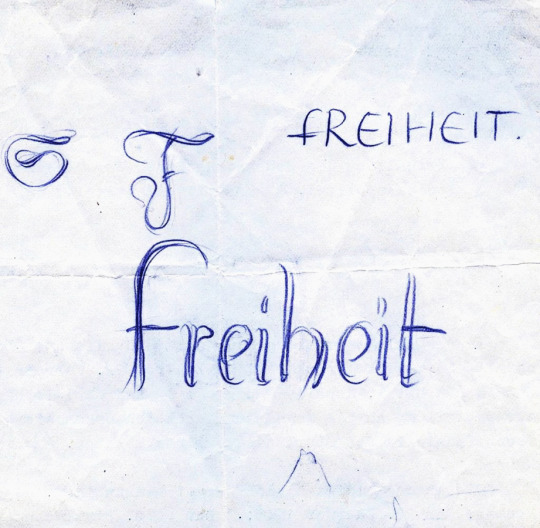
München, February 22, 1943 / 2023
«freiheit»
(the reverse side (detail) of a document belonging to the Chief Prosecutors, February 21, 1943, with handwriting «freedom» by Sophie Scholl)
«Die Verurteilte war ruhig und gefasst.»
(Protokoll über die Vollstreckung des Todesurteils des Volksgerichtshofes an Sophie Scholl, München, den 22. Februar 1943)
Sophie Scholl (May 9, 1921 – February 22, 1943), student
Hans Scholl (September 22, 1918 – February 22, 1943), student
Christoph Probst (November 6, 1919 – February 22, 1943), student
Alexander Schmorell (September 16, 1917 – July 13, 1943), student
Kurt Huber (October 24, 1893 – July 13, 1943), professor
Willi Graf (January 2, 1918 – October 12, 1943), student
and
Hans Konrad Leipelt (July 18, 1921 – January 29, 1945), student
Margaretha Rothe (June 13, 1919 – April 15, 1945), student
Reinhold Meyer (July 18, 1920 – November 12, 1944), student
Friedrich Geussenhainer (April 24, 1912 – April 1945), student
Katharina Leipelt (May 28, 1893 – January 9, 1944), dr. rer. nat.
Elisabeth Lange (July 7, 1900 – January 28, 1944)
Margaretha Mrosek (December 25, 1902 – April 24, 1945)
Kurt Ledien (June 5, 1893 – April 23, 1945), dr. jur.
«Das wird Wellen schlagen»
«Allen!»
#weiße rose#sophie scholl#hans scholl#christoph probst#alexander schmorell#kurt huber#willi graf#hans konrad leipelt#margaretha rothe#reinhold meyer#friedrich geussenhainer#katharina leipelt#katharina leipelt baron#elisabeth lange#margaretha mrosek#margaretha mrosek schram#kurt ledien#weiße rose stiftung#studentenwohnheim geschwister scholl#1890s#1900s#1910s#1920s#1940s
26 notes
·
View notes
Text




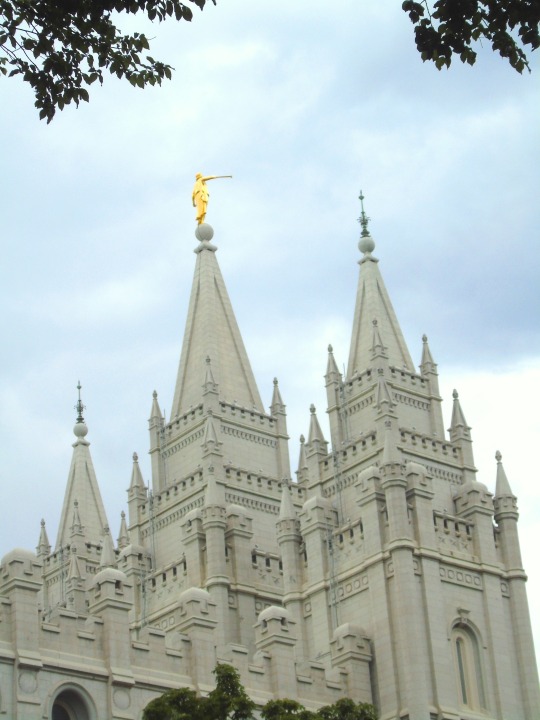

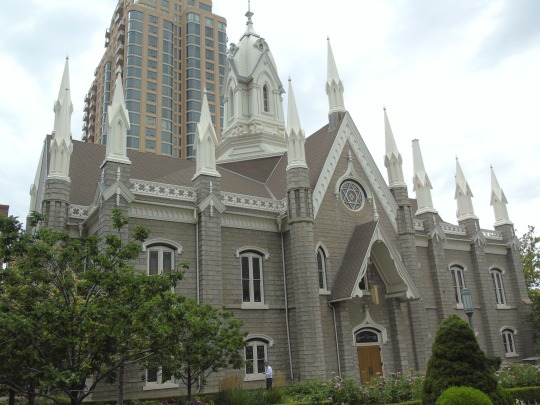


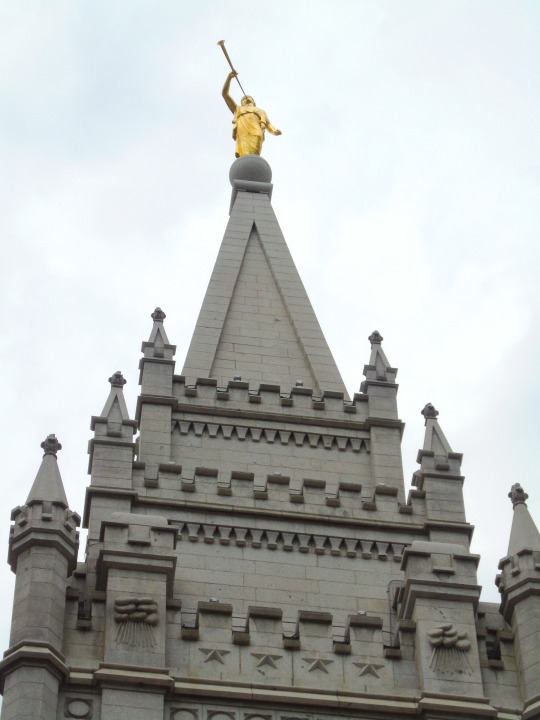



Church of Christ, the original church of the Latter Day Saint movement, was organized by Joseph Smith and others at either Fayette or Manchester, New York on April 6, 1830.
The Reorganized Church of Jesus Christ of Latter Day Saints, later renamed Community of Christ, is organized by Joseph Smith III and others at Amboy, Illinois on April 6, 1860.
The Salt Lake Temple of The Church of Jesus Christ of Latter-day Saints was dedicated by Wilford Woodruff on April 6, 1893.
Church of Latter-day Saints Day
It was on April 6, 1830, in Fayette, New York, that a small group led by Joseph Smith organized the "Church of Christ," the first church of what would become the Church of Jesus Christ of Latter-day Saints (LDS). The anniversary date of April 6 has become known as Church of Latter-day Saints Day.
Joseph Smith claimed that an angel named Moroni visited him in a vision in 1823 and told him about a Hebrew text that had been lost for 1,500 years. The text recounted the story of Israelites who had lived in the Americas during the time before Christ and had prophets similar to those in the Old Testament. Smith said he was told the text had been engraved on gold plates in the fourth century by a Native American historian, and that the plates were buried in a nearby hill. He said he excavated them four years later after Moroni told him where they were. Smith translated the text into English and it was published as The Book of Mormon in 1830, the same year he organized the church. On account of this book, members of the church are often called Mormons, although the church discourages the use of the term.
The church taught there would be a Second Coming of Christ which would be followed by a "1,000-year reign of peace." Because of this, Smith wanted to establish a "Zion," or kingdom of God, in the western United States. Mormon communities were set up in Ohio, Illinois, and Missouri, with the latter being chosen as the location for Zion. In 1839, Smith founded the city of Nauvoo in Illinois. The group there faced hostility from non-Mormons, and after Smith pushed back against dissidents within the church, the hostility and resentment from non-Mormons heightened even more, and Smith was arrested. Smith and his brother were murdered in a jail cell by an anti-Mormon mob in nearby Carthage, Illinois, on June 27, 1844.
Smith's successor as church president, Brigham Young, set out from Nauvoo and headed west with a group of 148 Mormons in 1846. They arrived in Salt Lake Valley in present-day Utah in July 1847. Young said, "this is the place," and the group settled. Young sent missionaries across North America and Europe, and new members were encouraged to move to Utah.
The settlement applied for statehood in 1849 and was denied, but Young was made governor of the new Territory of Utah. Further efforts to gain statehood in the 1850s went nowhere once it became publicly known that Mormons practiced polygamy and that they wished to form a theocratic government. Then, the Mountain Meadows Massacre took place, during which Mormons killed members of a wagon train. In response, the military arrived and a non-Mormon governor was put in charge of the territory.
Young died in 1877 and church leadership was taken over by John Taylor, and then by Wilford Woodruff. In 1890, during Woodruff's presidency, the church announced it was banning polygamy in the United States, in order to follow the country's law. (Polygamy was still allowed outside of the United States and it continued in locations like Mexico.) Utah was admitted as a state in 1896.
Today there are members of the Church of Jesus Christ of Latter-day Saints all around the world. In the early twenty-first century, church membership was at about 16 million. The church is still headquartered in Salt Lake City, Utah, and more members reside in the United States than in any other country. Over 150 groups have sprouted off of the LDS for various doctrinal and political reasons. The biggest is the Community of Christ, which was known as the Reorganized Church of Jesus Christ of the Latter-day Saints until 2001. It is headquartered in Independence, Missouri, the location that Smith had designated as Zion.
The Book of Mormon and the King James Version of the Bible are the two most important texts in the Church of Jesus Christ of Latter-day Saints. Other important texts are Pearl of Great Price and Doctrines and Covenants. The church teaches of a "Godhead" of three beings: Father, Son, and Holy Ghost. But unlike Christians, who see them as part of the Trinity, they teach that they are separate entities.
Like Christianity, they teach that Jesus Christ came to Earth to die for everyone's sins and that he rose from the dead, but they also teach that people's own actions have an effect on their future. They teach that faithful members will become gods themselves and that Christ will return and rule on Earth for 1,000 years. After this, the Earth will become a celestial sphere and the highest kingdom of heaven, where the righteous will live. Others will live in lesser kingdoms known as "terrestrial" and "telestial."
Source
#Assembly Hall#Church of Latter-day Saints Day#Mormons#not really a religion more of a cult#Salt Lake City#Utah#summer 2017#original photography#vacation#USA#travel#architecture#cityscape#ChurchOfLatterDaySaintsDay#6 April 1830#anniversary#US history#LDS#public art#tourist attraction#landmark#Miracle of the Gulls by Mahonri M. Young#garden#Handcart Pioneer Monument by Torlief S. Knaphus#Temple Square#Salt Lake Temple
0 notes
Text

Maxine Albro, photographed by Imogen Cunningham in 1931
Maxine Albro (January 20, 1893 – July 19, 1966) was an American painter, muralist, lithographer, mosaic artist, and sculptor. She was one of America's leading female artists, and one of the few women commissioned under the New Deal's Federal Art Project. via Wikipedia
Imogen Cunningham (/ˈkʌnɪŋəm/; April 12, 1883 – June 23, 1976) was an American photographer known for her botanical photography, nudes, and industrial landscapes. Cunningham was a member of the California-based Group f/64, known for its dedication to the sharp-focus rendition of simple subjects. via Wikipedia
Oral history interview with Maxine Albro and Parker Hall, 1964 July 27
1 note
·
View note